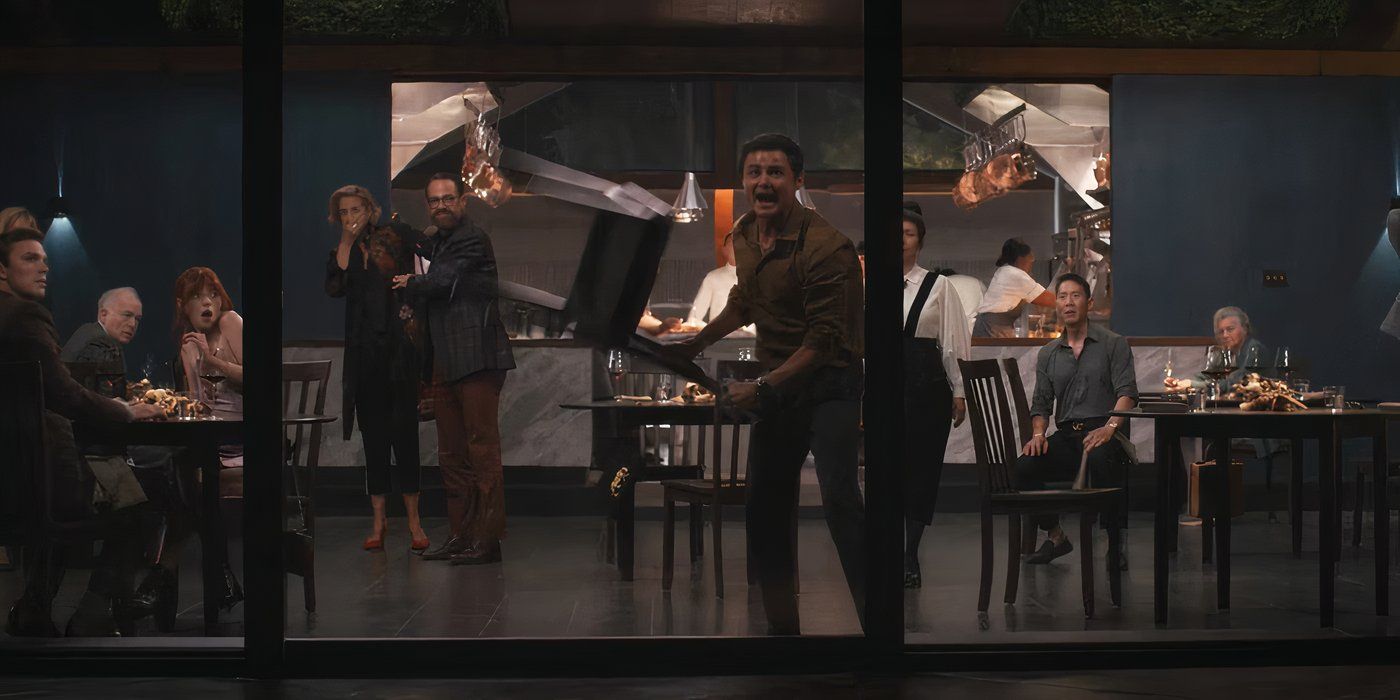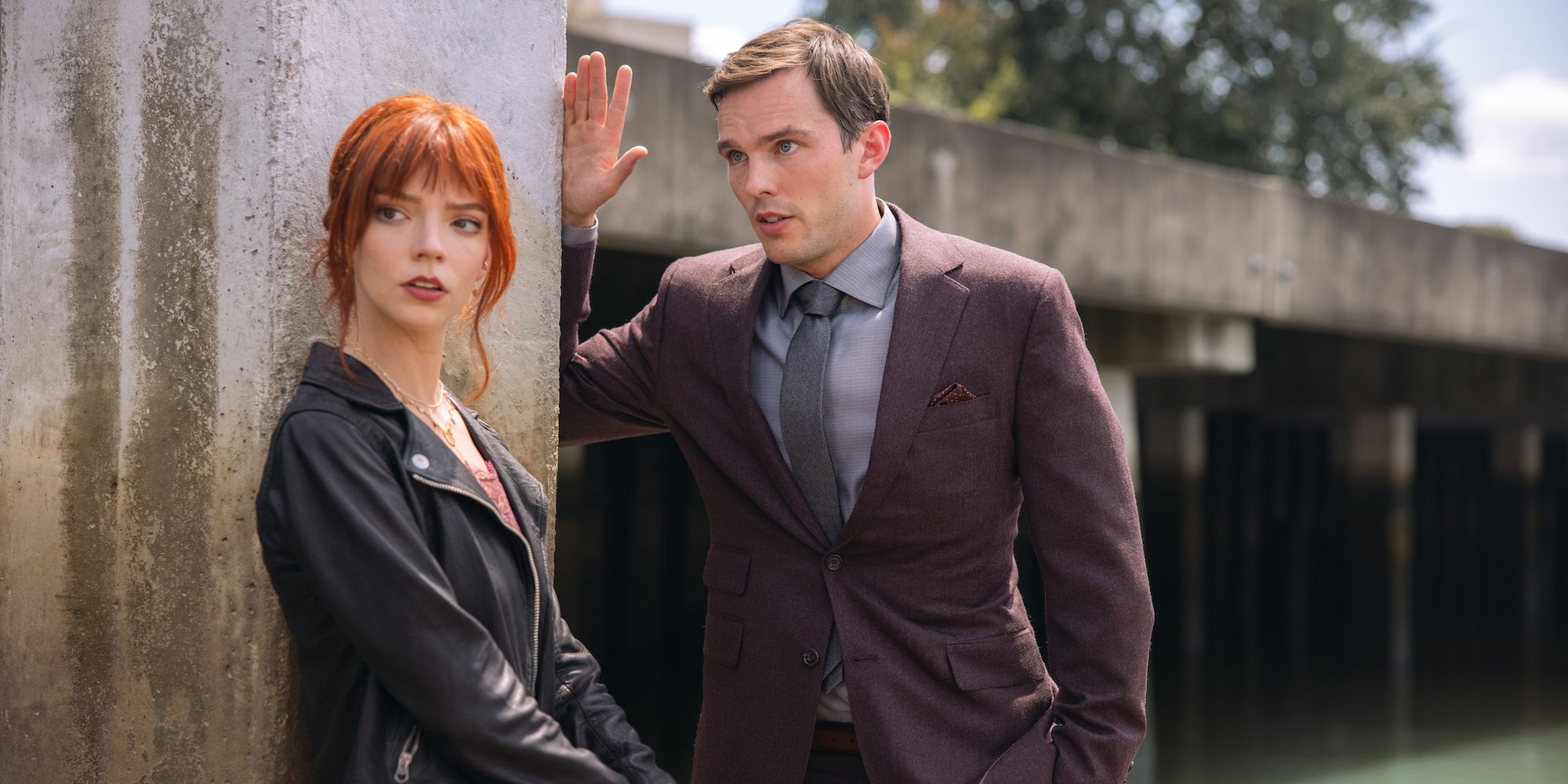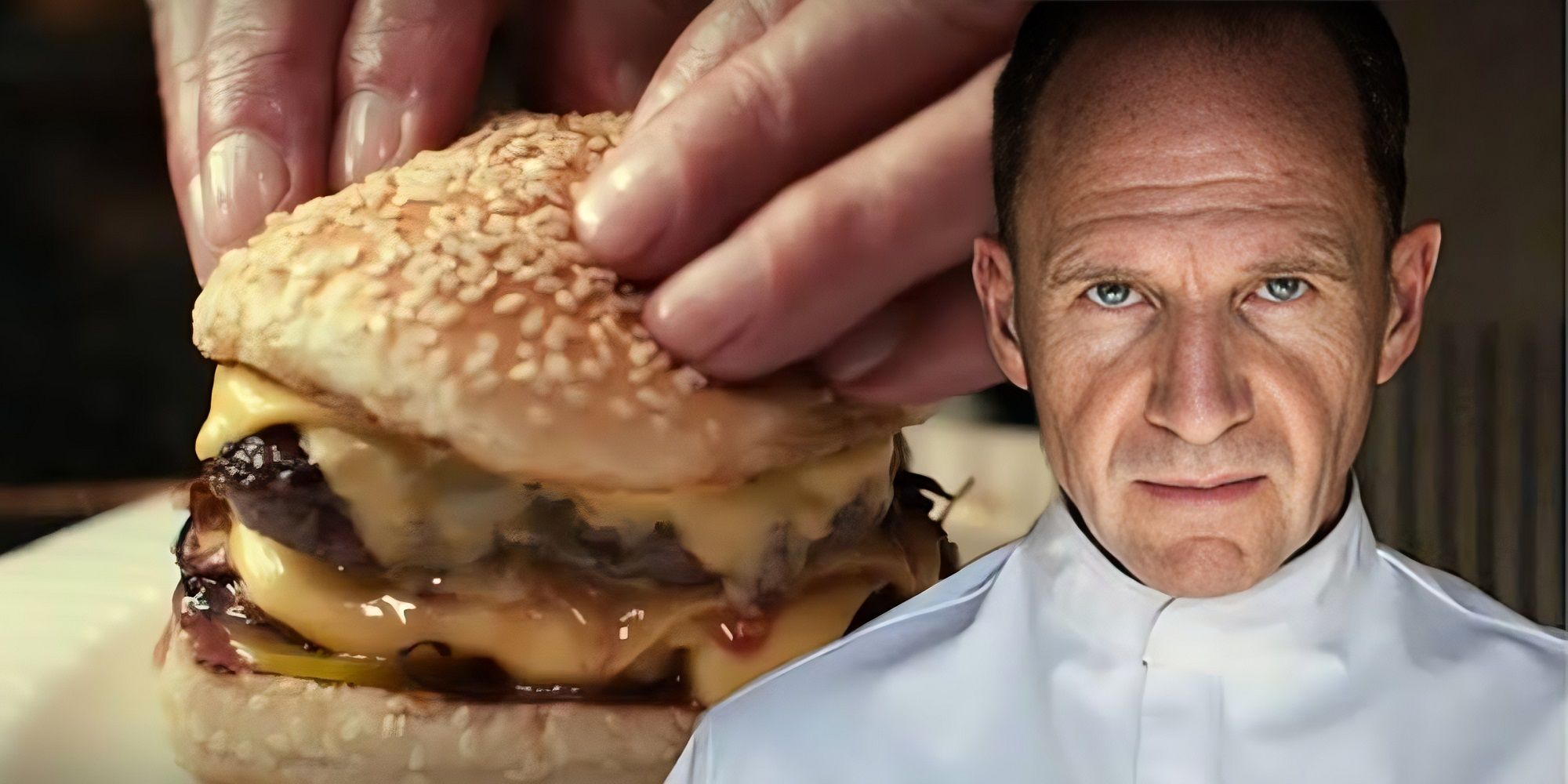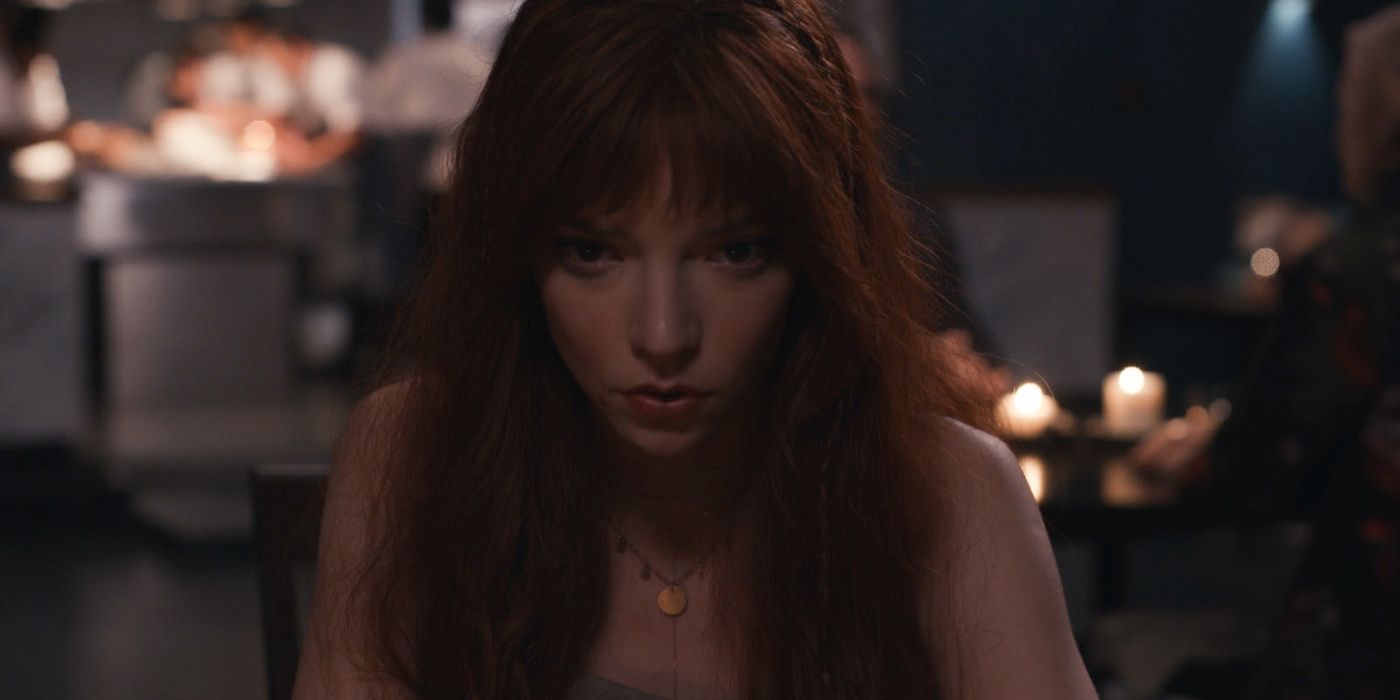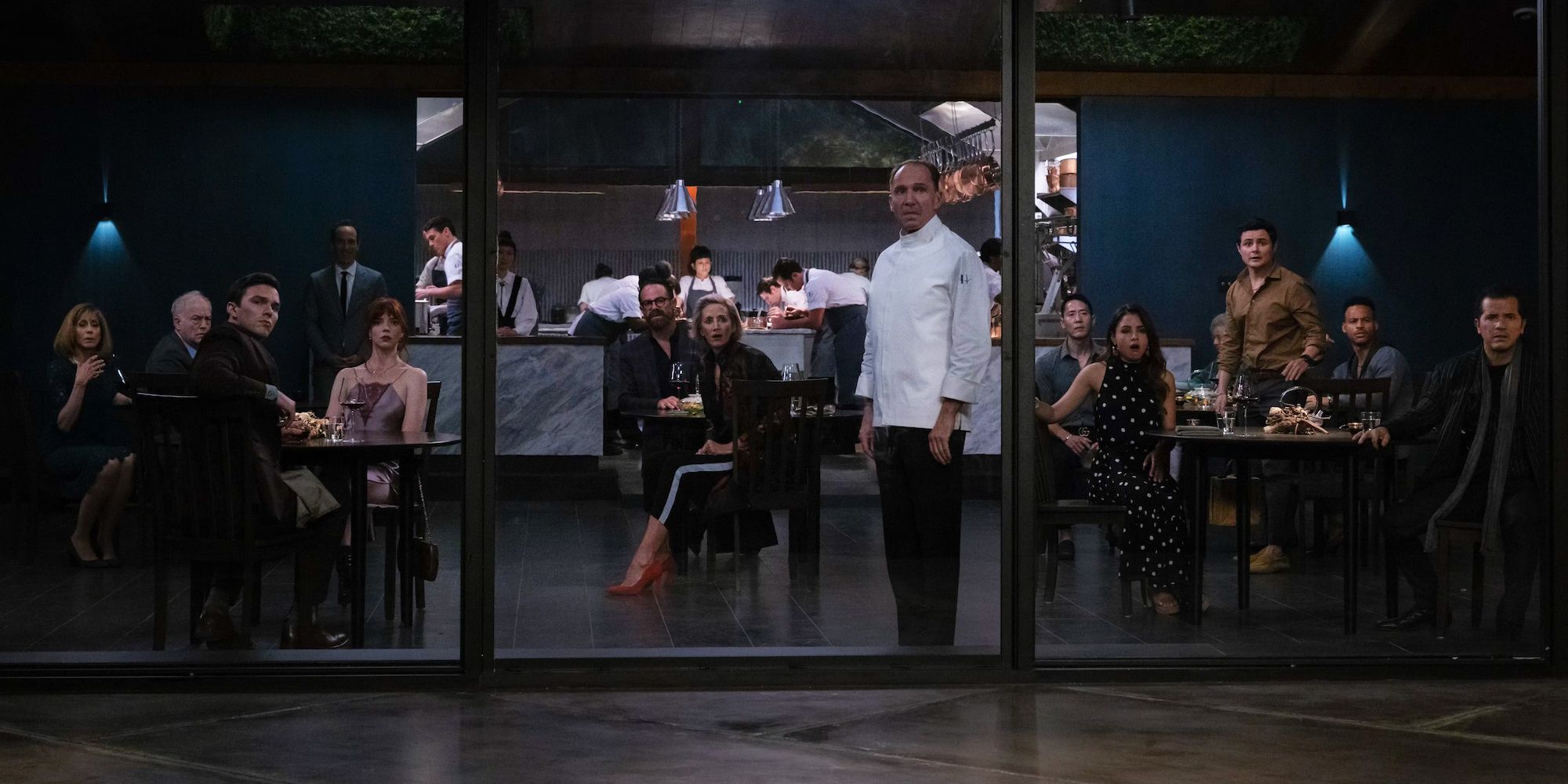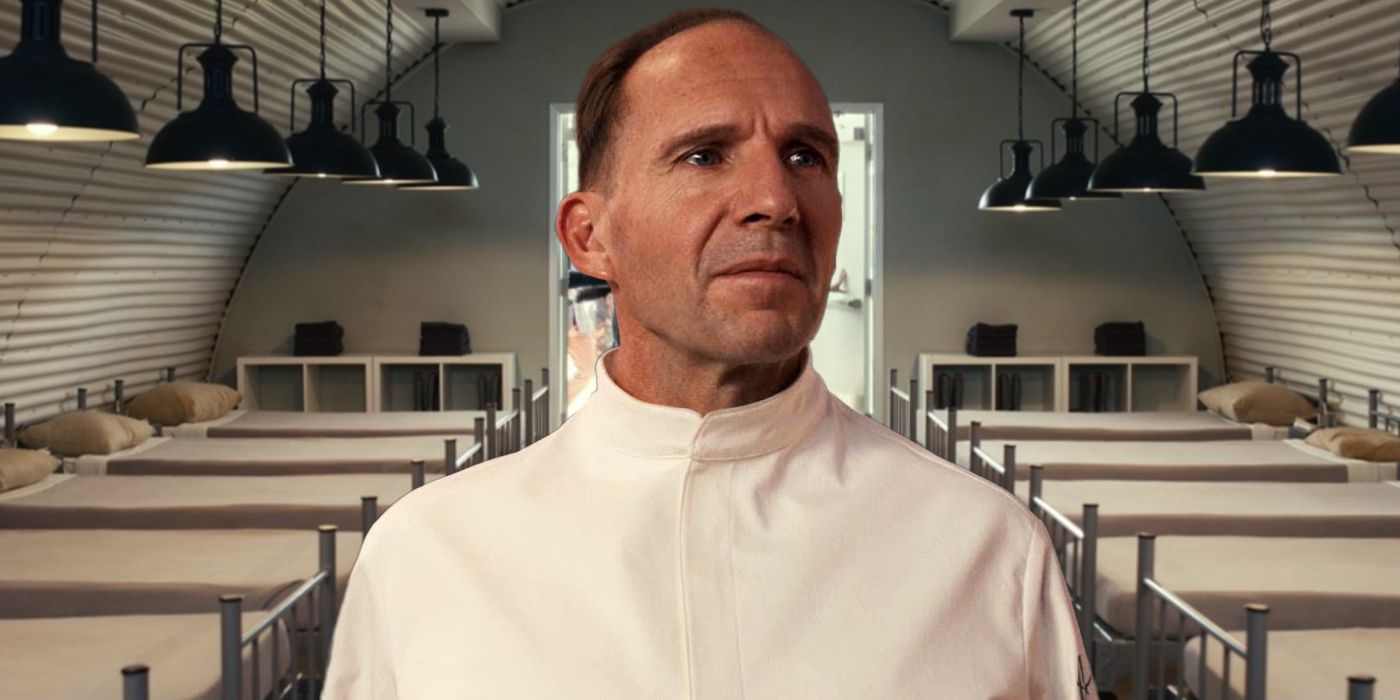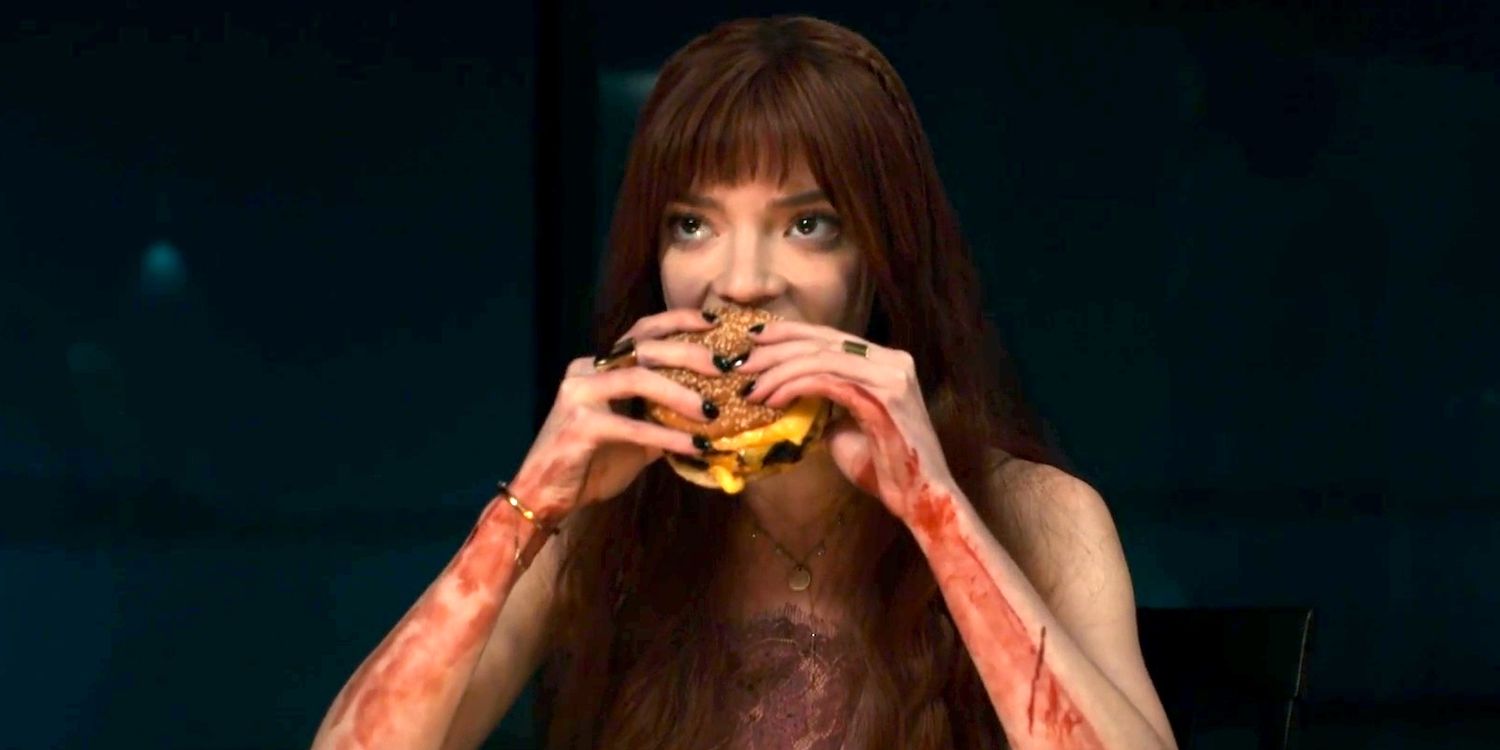Summary
- The ending of
The Menu
reveals that Chef Slowik burns down Hawthorn with the guests inside as a punishment for their excessive wealth and pretentiousness. - Chef Slowik’s plan is to make his shallow and disconnected guests feel powerless and embarrassed before they die, highlighting the industry’s elitism.
- Margot is allowed to leave because she represents a connection to Chef Slowik’s roots and reminds him of the joy of simple, well-prepared food.
The Menu‘s ending brings the dark satire to an unexpected conclusion. Directed by Mark Mylod from a screenplay by Seth Reiss and Will Tracy, The Menu follows celebrity chef Julian Slowik (Ralph Fiennes) as he puts his affluent restaurant guests through a dining experience like no other. Once the 11 guests, including Tyler (Nicholas Hoult) and Margot (Anya Taylor-Joy), arrive, things start going awry. Slowik’s dinner guests soon discover he may have invited them for something far more sinister than gourmet cuisine.
At the end of The Menu, it’s explained why Chef Slowik, along with what remains of his staff, burns down Hawthorn with all the guests — save Margot — still inside. Margot escapes, watching as Hawthorn goes up in flames with Tyler and the other guests trapped within — punished for their excessive wealth and self-indulgence by Slowik. The spectacle of the scene is a talking point in and of itself, but it’s the mystery and deep social commentary that made The Menu ending so inspired. The Menu’s story has plenty of layers ready to be peeled back and explored.
Related
17 Best Movies Like The Menu
From Fresh to Bodies Bodies Bodies, there are many great horror films about parties and privilege that will appeal to fans of The Menu.
Slowik’s Plan In The Menu: Why The Chef Wanted To Kill Everybody
Slowik Held His Guests Responsible For Ruining Fine Dining With Their Pretentiousness
The Menu ending explained that Chef Slowik’s plans for the evening, which he slowly revealed after each course, were sinister but not without purpose. The violence, murder, and burning down of Hawthorn weren’t random or sadistic. Chef Slowik is punishing Hawthorn’s guests because they are the cause of the fine dining industry’s pretentiousness and elitism — both of which eroded his joy for cooking over the course of his career.
The guests’ wealth has pushed the food industry forward, but it has also made the dining experience costly, widening the gap between socioeconomic classes and sucking the life and pleasure out of the tasting experience. Chef Slowik feels like a shadow of his former self, and his resentment of the gluttonous elites who use landing a table at the Hawthorn as a show of status became so overpowering he had to act.
He wanted them to taste true powerlessness before they died.
Chef Slowik (Ralph Fiennes) wanted to make his guests, all used to wealth allowing them to live free from consequences, feel embarrassed and affronted by the time the fatal final course rolled around. Slowik’s clientele are shallow, self-serving, and disconnected from the authentic human experience — something he seeks to remedy.
The celebrity chef made his guests experience what it was like to feel helpless at someone else’s mercy. He wanted them to taste true powerlessness before they died. The fact their consumerist elitism was also responsible for the art being lost from cooking in Slowik’s eyes only fueled his rage, and by the end of The Menu, he’d had plenty of opportunities to act on the decades of repressed hatred.
Margot Gave Slowik Some Of His Passion Back
Throughout The Menu, Chef Julian Slowik is perplexed by Margot’s presence. As the film unfolds, audiences learn that Chef Slowik has a very particular plan, and Margot is simply not meant to be a part of it. Margot is not wealthy or pretentious, nor does she see his cuisine as anything but food — it’s not an elite experience for her.
Chef Slowik finds in her a kindred spirit of sorts, someone who understands what it’s like to grow up with very little, but has gamed the system in some way to get ahead. Slowik wants to punish the elite, but not Margot (Anya Taylor-Joy), who has not harmed anyone or an entire industry.
The famous chef is renowned for the exquisitely detailed menus of the Hawthorn, creating elite dining experiences costing thousands. However, Margot is unimpressed with his food and its presentation, not understanding what the big deal is. Margot challenging Chef Slowik to make a delicious hamburger catches him off guard, but it’s this very request — and Margot’s approval of the meal — that is why Margot is allowed to leave.
Margot reminds Chef Slowik of his roots and the joy of eating a well-prepared meal. The fact that Margot is not pompous about the hamburger suggests she understands the experience of mindfully tasting food more than any of Chef Slowik’s pretentious guests pretend to, and since she holds none of the wealth or pomposity he’s grown so resentful of, he’s okay with letting her leave so that she may live.
Slowik Also Revealed Tyler’s Secret About The Deadly Evening
Tyler’s death in The Menu stands out as a particularly compelling one. Throughout the night, Tyler is constantly trying to prove himself to Chef Slowik by name-dropping different products and methods the Chef uses to create his signature dishes. Slowik does him one better by inviting Tyler into the kitchen, even giving him a chef’s coat, and demanding that Tyler cook for his guests. The amateur cook then haphazardly creates an undercooked lamb, humiliating himself in front of his hero and all of Slowik’s guests.
Tyler spent his entire life idolizing Slowik, only for his hero to despise him and prove in front of an audience that he’s a fraud.
Chef Slowik then whispers something into Tyler’s ear, to which Tyler replies “Yes, Chef,” before excusing himself. Before long, it’s revealed that whatever Slowik whispered caused Tyler to hang himself with his own necktie. One of the biggest twists of the evening is that Tyler was aware of Slowik’s plan but attended the dinner anyway, bringing Margot along despite knowing that everyone would die. Tyler had already chosen his death — he just expired sooner than expected.
Bringing Margot along without any regard for her life reveals his disdain toward the lower class and service workers. Tyler spent his entire life idolizing Slowik, only for his hero to despise him and prove in front of an audience that he’s a fraud. Tyler was already prepared to die for the Chef, and after such humiliation, his suicide was most likely a sycophantic attempt to prove his dedication and redeem himself.
It’s never revealed what Slowik whispered to Tyler in The Menu, and on The Tonight Show Starring Jimmy Fallon, Nicholas Hoult revealed the explanation was also never in the script.
”
No, no, it wasn’t scripted what he whispers in my ear. And Ralph is fantastic… And he would deliver different things… different things in my ear… You don’t want to know what he was saying
.”
That perfectly speaks to what makes the whisper so significant. Though audiences can deduce what Chef Slowik said to Tyler in The Menu, the whisper keeps Slowik’s expert manipulation tactics a mystery, and it shows how much power Slowik has over his guests while making audiences imagine the worst possible dialogue.
The Final Order Is Margot’s Salvation
As the guests slowly begin to realize that there is no way off the island after the ferry operator turns out to be a plant by Slowik, Margot tries to plot her own escape. She strides to the kitchen, telling Slowik that she doesn’t like his food and that she’s still hungry. Slowik asks what she wants, and Margot, recalling the picture she saw in his cabin, asks for a cheeseburger with fries.
Slowik tenderly makes this meal for her, and when she asks for it to go, he gives her a doggy bag, and she escapes via the ferry. The final shot sees Margot on the ferry, eating her cheeseburger while Hawthorn burns to the ground. Several theories have emerged about what the cheeseburger in The Menu represented. One of them is that the burgers are made from human meat (probably Tyler and the sous chef).
However, The Menu‘s cheeseburger is more symbolic than anything. The cheeseburger in The Menurepresents where celebrity Chef Julian Slowik got his start as a cook, and where his love of cooking began. Margot realizes this after he mentions to her that he finds no joy in his art anymore, and she asks for the cheeseburger in a last-ditch effort to reignite some sort of spark in the chef.
Thankfully for Margot, this works. Chef Slowik sees she is different from his other guests and allows her to leave. Slowik’s passion for food began when he was a line cook, as evidenced by the picture in his cabin, and he found his joy in making simple albeit delicious food. Margot’s simple request for a cheeseburger in The Menu rekindled some of Slowik’s love for his craft after years of serving patrons like Hawthorn’s doomed guests eroded it.
Why The Other Guests Never Properly Tried To Escape From Chef Slowik
They Would Rather Die Than Have Their Secrets Exposed
One lingering criticism of The Menu‘s ending is that the guests put very little effort into self-preservation. As many viewers have noted, their fate may not have been inevitable if they’d all resisted. This, however, is where the film’s climax has another layer of complexity, and this “critique” is actually just pointing out another strength of the plot. Chef Slowik gives his guests the opportunity to leave Hawthorn and the remote island, but they don’t seem to try that hard — which is exactly why they were hand-selected for the evening and sent invitations.
Slowik knew exactly what made them tick and how they would react, and foresaw that they’d likely make no real attempt to leave. However, as a failsafe, the celebrity chef also ensured that he had blackmail material. The guests still felt stuck because Slowik had information on them that they didn’t want to be made public. Most of these secrets were revealed in the taco course, which saw individual etchings on the tortillas displaying his guests’ secretive doings.
For example, Lillian’s writings as a food critic had closed down numerous restaurants, and Richard was a serial adulterer. Bryce, Dave, and Soren were embezzling money — and George’s taco etching was a movie poster of a flop film he did simply for the money. The guests don’t have the same level of emotional rationale or reasoning as viewers. They are all terrible, self-serving people. The average viewer would, of course, try to escape the Hawthorn, but Chef Slowik’s carefully selected guests don’t have that survival instinct.
With every course in The Menu dripping with meaning, Chef Slowik knew that his guests’ reputation and pride took precedence over their fight to live. The Menu ending explained that money talked above all else, and the guests would rather face death than deal with the consequences of Chef Slowik releasing certain information.
Despite the men getting a 45-second head start, they didn’t try all that hard to escape, being found easily by Slowik’s staff. The women, on the other hand, didn’t even try to escape at all. Rather, they went back inside Hawthorne’s dining hall and talked among themselves, ultimately accepting their fate.
Slowik Has Inspired Blind Devotion In His Team
The Menu ending showed that Chef Slowik’s staff went along with his devious plan for one reason only: devotion. This devotion towards The Menu‘s villain is primarily shown through Elsa and Slowik’s sous chef. The sous chef is the first death of the evening, shooting himself in the head when Slowik affirms that his dish is good, but not good enough. Elsa truly shows how invested she is when she tries to kill Margot because Slowik asked Margot to find the barrel for the dessert course, rather than her.
This is also a commentary on the dehumanizing element of working in catering and fine dining.
Throughout the entire evening, the staff’s undying devotion to their leader is abundantly clear. Every demand is met with a uniform “Yes, Chef!”, and their almost militaristic work ethic sees them as a conglomerate force rather than individual people. For whatever individualistic reasons, Chef Slowik has found a ride-or-die staff that is devoted to his overall vision, no matter the cost. This is also a commentary on the dehumanizing element of working in catering and fine dining.
The subtext is that devotion to Hawthorn and its clientele has had a similar impact on the staff as it has on Slowik, although, unlike their murderous yet autonomous leader, the staff has instead become almost mindless shells, existing only to follow orders and serve the delivery of the evening’s menu, even if it’s a lethal meal plan that ends in their deaths.
Margot’s True Identity: Why She Hides Her Real Name & How She Knows Richard
Margot’s Secret Connects Her To Slowik
Margot, like everyone in The Menu, isn’t who she says she is. However, it isn’t until Chef Slowik takes notice of her that it’s revealed something is amiss about her backstory. Margot is actually a sex worker whose real name is Erin. It’s established that Erin has well-paying clientele because Richard, who frequents Hawthorn with his wife, has hired her before.
Margot’s work is intriguing to Chef Slowik, and he believes they, unlike the other guests in The Menu, understand each other in a way no one else does or can. Margot is not a rich snob but is someone who is burdened by the wealthy, like Tyler, while profiting from them at the same time.
Slowik Returns To His Roots & Makes The Guests Themselves Part Of The Dining Experience
The final course at the end of The Menu is an elevated s’mores dish. After the staff covers the floor with crushed graham crackers and various sauces, the guests are made to don a sort of cowl made of marshmallows and hats made of chocolate. Slowik chose this particular dish because it is an odd mixture of flavors that is only made perfect because of fire.
After this explanation, the entire restaurant is set alight, and the guests burn alive, fulfilling Slowik’s wishes. The s’mores are another callback to the celebrity chef’s humble beginnings, but the true meaning found in his speech is that they are perfected by fire, bringing his murderous plan full circle as he sets his guests alight.
The Menu is an examination of the exorbitant consumer culture, of foodies, and the superficiality of the wealthy who believe they’re giving to the fine dining experience when they’re really leeching from it.
The film has a lot to say about the origins of the food Chef Slowik’s guests enjoy — from the working class and poor primarily — and how that very food, when overly commercialized and treated as an “experience” for the rich, becomes less creative and enjoyable over time. An example of this is Chef Slowik’s passion for creating meals fading because his guests don’t truly taste the food. They are more obsessed with the details of the meal than with the pleasure it provides.
The Menu is also a commentary on the class divide and how the rich gentrify experiences — such as fine dining — and make them entirely inaccessible to all but the elite for no reason other than to be socially exclusive. This is shown in Tyler’s obsession with Chef Slowik’s use of ingredients — Tyler doesn’t much care about the food itself, he cares that he can use it to feel superior to everyone he believes won’t appreciate Slowik’s work, such as Margot.
This snobbery, and Tyler’s eagerness to indulge it, ultimately seals his fate in The Menu ending, but the fact the guests die as human s’mores (a dish that is anything but pretentious), adds a layer of irony which nonetheless makes the themes of class divide abundantly clear.
A Real Chef Was Consulted For The Film
Every single part of The Menu, from the opening to the finale, is steeped in real-life fine dining culture. The crew went to great lengths to capture all the experiences of both dining and working at a Michelin-star restaurant. Director Mark Mylod worked with Michelin star-winning chefs to create the restaurant and the food in The Menu (via Los Angeles Times). Dominique Crenn, the chef of San Francisco’s Atelier Crenn who creates her dishes in the form of poems, showed Mylod how chefs work in the kitchen. The chef explained:
“
It was not just about the detail of the food; it was a detail of everything that was placed, the movement, the dance, the way that the server will carry the bottle, or the sommelier.
”
Crenn also worked with Fiennes, teaching him how to act like a fine-dining chef at the end of their tether, which is why Chef Slowik’s ire felt extremely authentic in The Menu ending. The considerable weight on Chef Slowik’s shoulders as portrayed by Fiennes throughout The Menu came across as genuine, like it really had resulted from decades of working in the restaurant industry, which became essential in conveying the core meaning and themes of The Menu.
While it might seem outlandish, Chef Grant Achatz was even an influence on the over-the-top s’mores presentation in The Menu ending too — the explosive finale when Slowik sets the restaurant ablaze was influenced by Achatz’s Jackson Pollock-like live-drawn tabletop desserts.
There have not been any plans for The Menu 2, and this isn’t a bad thing. While the incredibly positive critical and audience receptions of The Menu and its incredibly complex ending may justify a sequel numerically, a follow-up could diminish the first movie. For all its shocking moments, The Menu is ultimately a film with a message. The ambiguity of the ending — from why Chef Slowik let Margot leave to what the significance of the cheeseburger was — is an essential element.
In many ways, it mirrors the experience of many chefs and kitchen staff throughout the world — an entire day of chaos and stress that feels almost nonsensical once the meal is over and the diners have departed. This was one of the key themes of The Menu, the disproportionate levels of dedication and sacrifice made by the staff to create a standout meal among many the patrons will have eaten in their lifetime. That slightly confused response of “What just happened” from the audience is one many real-life chefs and those who work in high-end catering can relate to.
If there were a sequel made, The Menu 2 would diminish this impact. There would be inevitable pressure for The Menu 2 to explain the events of The Menu, or to elaborate on the origin of Chef Slowik, or even to create a narrative with Margot that places her as the next homicidal Chef (or possibly, in Margot’s case, an escort). While these ideas may seem tantalizing at first, all would diminish the impact of The Menu‘s ending as they’d create far too much exposition, or make Chef Slowik’s final act simply the midpoint of a wider story.
There’s no sequel to The Menu 2 in the works, and none of the cast or creative team have given any hints that they’re pushing to develop one (or even interested). While sequels and franchises feel par-for-the-course in the 2020s, many standalone movies only work so well because they’re a contained story. The ending of The Menu was one of the most widely discussed of the decade so far, and all the reasons it’s so engaging would be negatively impacted if The Menu 2 went ahead.
Mylod Doesn’t See Slowik As A Villain
While the themes of class division and social stratification and The Menu ending are absolutely clear, a lot of the movie is still open to interpretation. However, director Mark Mylod has definitively explained the movie’s ending (via Den of Geek). Though Slowik is out-manipulated by Margot, Mylod believes that Slowik was submissive and that he wasn’t so much out-manipulated as he was outsmarted, allowing himself to be checkmated. Mylod explained:
”
He also realized that she’s manipulating him but he allows her to win. All the unspoken business is in the final discourse between them and the burger
.”
Mylod notes the surrealist 1962 movie The Exterminating Angel as a big influence, which is telling in itself. The Exterminating Angel has a similar premise about a group of wealthy dinner guests who are trapped at a dinner party, and it’s a representation of the aristocracy in Francisco Franco’s Spain. The director says of the profound movie:
“T
he sense of culpability of those diners, which we try to imbue the whole run of our film with, so there is a sense of almost a return to innocence from the diners by the end of the piece.
”
In that respect, Mylod sees Chef Slowik as The Menu‘s angel. The fact that Mylod believes that he is revealed as an angel is further proven when the director explains why Slowik kills the guests in The Menu. The director added:
“
From Chef Slowik’s point of view, they’re not getting their comeuppance, they’re getting liberation, they’re getting rebirth.
”
Chef Slowik might not be an angel, either figuratively or literally, but he certainly believes he is. Either way, from Mylod’s standpoint, Slowik didn’t think he was doing anything wrong by burning a dozen entitled characters alive at The Menu‘s ending, but he also didn’t think he was killing them.
There Are Theories About Margot’s Actual Fate
Did Slowik Get Margot In The End?
Mark Mylod’s view of The Menu‘s ending seems to confirm that Margot did find a way to beat Slowik and escape. However, that has not stopped some fans from offering their own dark theories about her fate. The most popular theory that has come up is that Slowik poisoned Margot’s cheeseburger and she was doomed to die as well after the credits roll. It’s an interesting theory and has some clues to back it up.
During an earlier tour of the island, Elsa shows off their collection of aged beef while mentioning that if it was aged too much it would have bacteria and cause the diner to die. It is theorized then that Slowik used that beef to make the burger, finding a creative way to poison Margot.
There are problems with the theory, though, mainly because it seems unlikely that Slowik would design this whole menu and then come up with some random way of killing Margot outside of his elaborate plan. However, it could be that Slowik understands Margot doesn’t belong here and that he genuinely felt bad she didn’t enjoy the food. While that didn’t lead to mercy on his end, it made him want to give her one good meal before he died while allowing her not to perish among The Menu‘s self-centered guests.
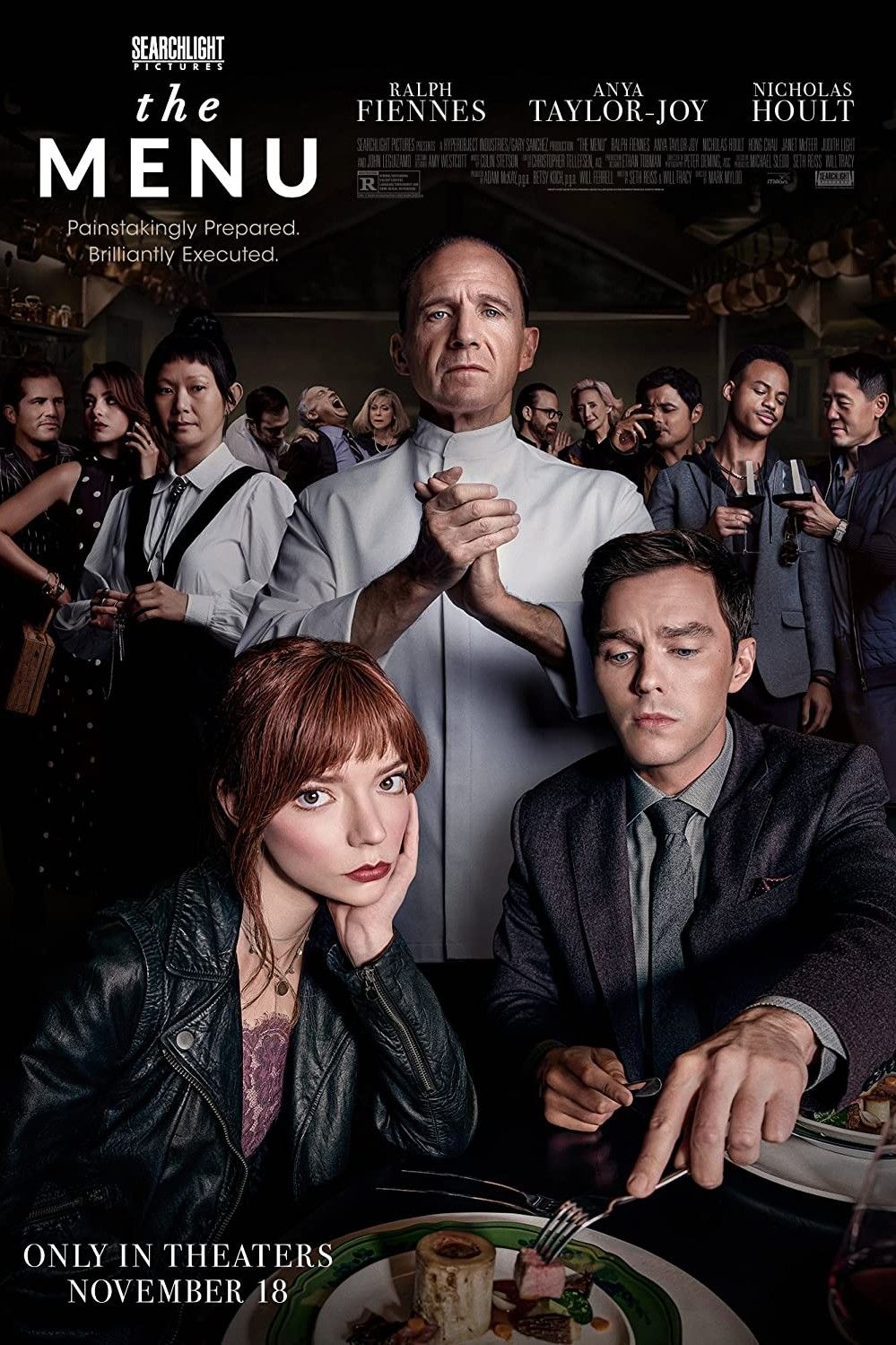
The Menu
A darkly comedic horror-thriller, The Menu focuses on a group of diners invited to a high-end restaurant on a private island by one of the world’s greatest chefs. Shortly after arriving on the island, Margot Mills begins to realize something is strange beyond the perceived pompous nature of the menu. Her suspicions are confirmed when the night turns deadly as the restaurant staff begins to descend into a cult-like madness.
- Director
- Mark Mylod
- Release Date
- November 18, 2022
- Runtime
- 106 minutes



